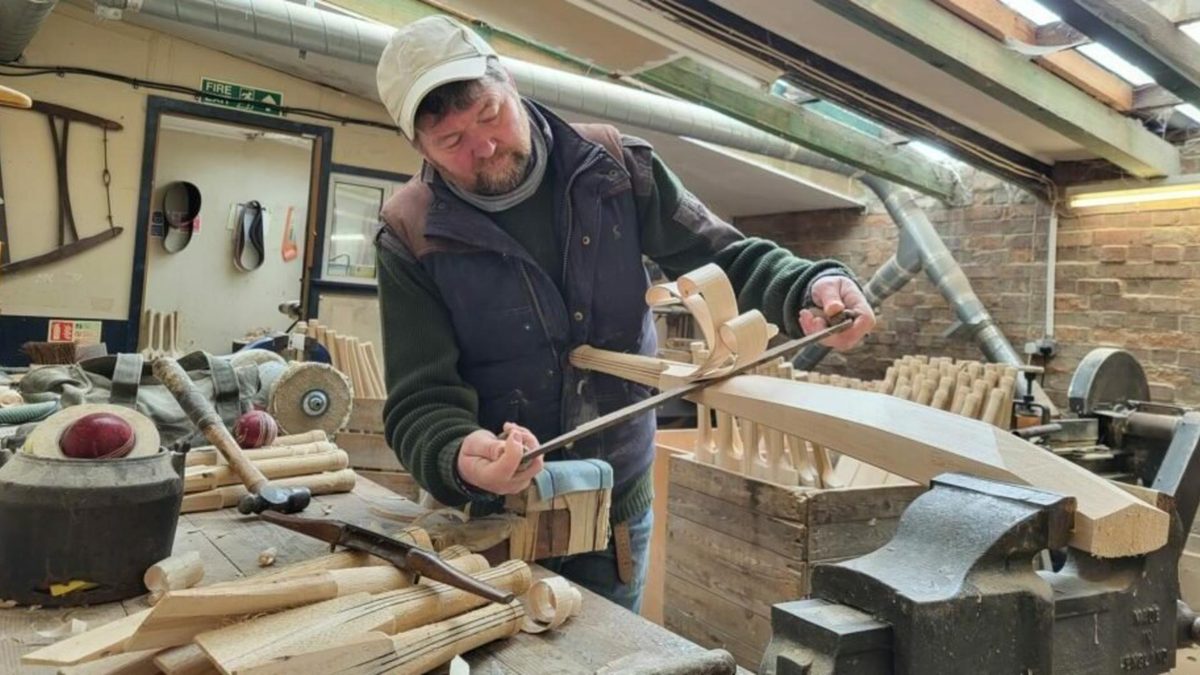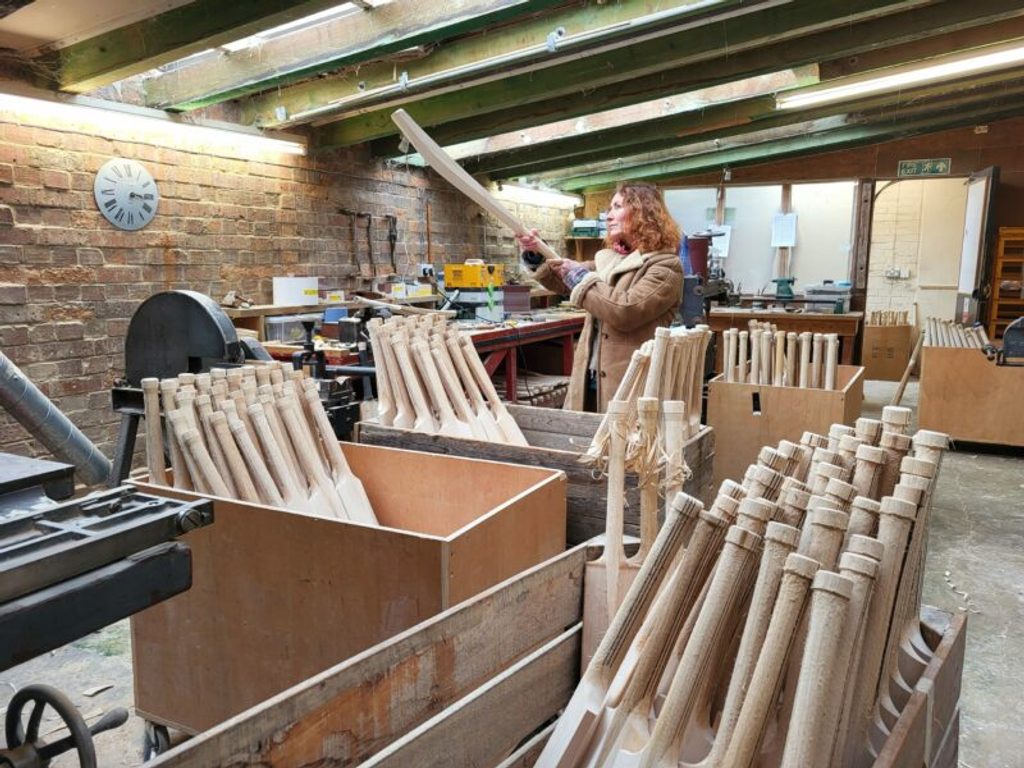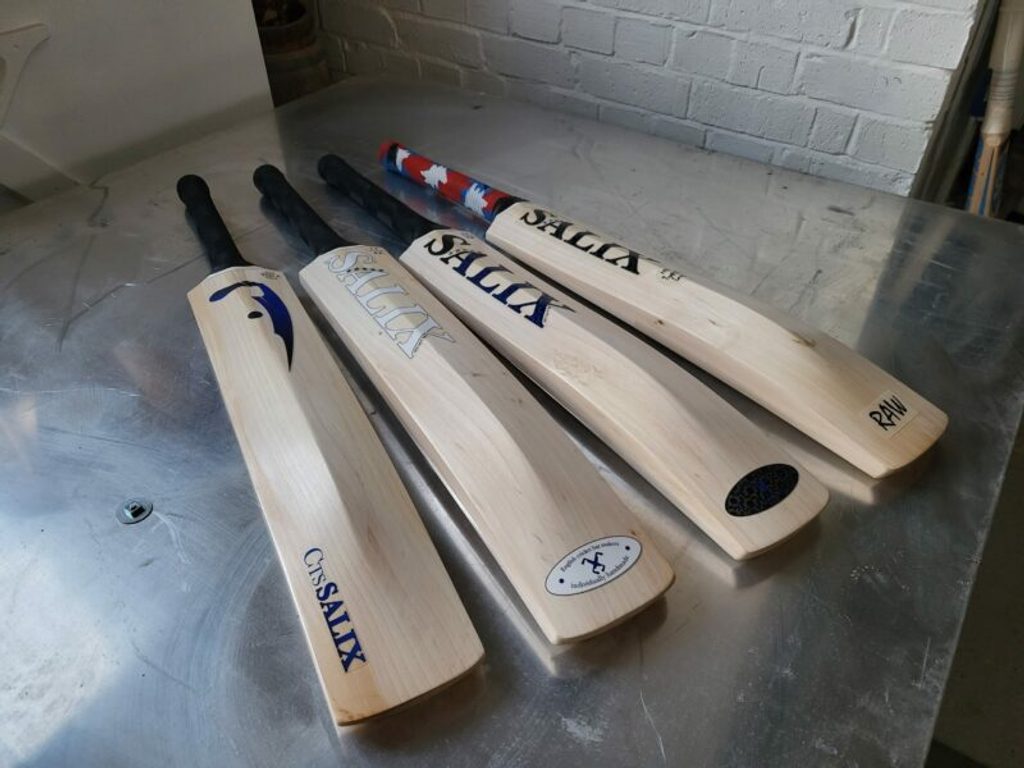
Salix bats occupy a mythic place in the story of English cricket. Phil Walker, Wisden Cricket Monthly editor-in-chief, went to find out why.
In the heart of the Kent countryside, the Salix workshop has for more than three decades been the creative hub of the great batmaker, Andrew Kember. Many tens of thousands of exquisite blades have been crafted here.
A legendary name in batmaking circles, Salix is not a mass-production business. There are no CNC machines here churning out identikit models. What Kember and his main workmate, Kel, offers is the promise of immaculate cricket bats, painstakingly produced from cleft to finish, each and every one of them by hand. Salix is not merely Kember’s company. It is his life’s work.
WCM: You say that the bats you’ve made in the past year are the best you’ve produced. Why is that?
AK: It’s the people involved. If you’ve got two or three people pulling in the same direction, it makes life easier because you can work out which person’s best suited to be doing what particular thing on any given day. I like working with Kel, because if I’m rasping, she’s binding, if she’s rasping, I’m polishing. If she’s polishing, I’m labelling. The process through the workshop is easier because no one’s standing around twiddling their thumbs, waiting for the next bat to come through because somebody specialises in polishing, but they can’t bind, or they can’t put labels on straight.
WCM: So how many bats are you now making per year?
AK: If we end up doing a couple of thousand this year, including junior bats, we’ll be pretty pleased. That would be pretty good. But we’ve had weeks where we’ve produced a hundred bats in a week, and that is startling for two people…
WCM: From cleft to finish, what are the secrets to making the perfect bat?
AK: I think it’s three things. The shape of the handle is absolutely critical. You pick the bat up with the handle. It’s got to feel good. That’s crucial. And the pressing is key. And then of course the overall shape and weight. People like using bats at around 2lb 8oz – and we would love them to use 2lb 11oz bats because we could make the bats quicker! But the retail trade is not going to take large numbers of bats above 2lb 10oz. So you have to hit that weight range, and that’s one of the things we do quite well. You’ve got to be prepared to scale the bat down, but its shape still has to capture the imagination.
WCM: Every Salix I’ve ever picked up has a slightly bowed shape. Why do you subscribe to that style?
AK: It’s like a fluid shape, isn’t it? You want the bat to feel like an extension of your hands. If the bat feels comfortable in your hands, the chances are you’re going to be able to time the ball. Ideally you want a shape through the face, otherwise it can feel a bit too much like carpentry, a bit too straight – and you’ve got something that feels a bit clumpy. And the wickets that most people play on are not brilliant. Often the ball doesn’t come on like it does in first-class cricket. So I think the bat needs to feel comfortable in the hands so that players can then just, you know, find their way as they’re batting. If the bat doesn’t feel good, I think it’s much harder to do that.

WCM: With demand outstripping supply, it feels like there’s a fresh buzz around Salix at the moment.
AK: I hope so! We have a live online feed that we set up two or three times a week. That helps us, because it’s our way of showing people what it’s actually like in the workshop. It can be relentless at times – if you’re making bats for the retail trade, they don’t want them in batches of ones and twos, they want them in 10s and 20s. So that’s a test. There’s no real romance with it! It’s full-on work, but very rewarding.
WCM: Who does the Salix artwork for you?
AK: I still do it myself. What we’ve done this season is to use more primary colours. We haven’t done that very much in
the past. We’ve tended to use pastel colours, and although that’s nice close up, I don’t think it has the impact that we need in the shops now. So although we haven’t changed the shape very much, we’ve certainly gone for brighter and bolder colours.
WCM: And is that a reflection of the changing nature of the game itself?
AK: I definitely want our bats to look like modern pieces of sporting equipment, more than…
WCM: A piece of fine art?
AK: Yeah!
THE BATS

KNIFE
The Knife, named after the very tool used to make it, the ‘draw knife’. An exquisite tool. Each one of these top-grade bats has been shaped by hand. The trees are cultivated and grown in England, the clefts are cleaved and dried in England, and these handmade ‘Knives’ are made in England.
AMP
The AMP, as the name suggests, is all about amplified profile, power and control. A stunning, traditionally pressed, high-performance bat.
AJK
The AJK encapsulates Salix’s experience and passion as batmakers. This bat has the biggest edge profile in their line-up, thanks to the semi-flat pressing and its contemporary design.
RAW
This is an upgrade of the ‘RAW’ from previous seasons. In essence, this model is all about fast and fluid batmaking. The maker uses the draw knife to pare down the cleft into a masterful shape. If the draw knife is an extension of the batmaker’s hands, then the RAW is an extension of the player’s.
Tammy Beaumont
ENGLAND WORLD CUP WINNER
“I remember walking into the Salix factory for my first bat as an 11-year-old. Andrew took the same care and attention to make my Size 5 bat, with thinner handle for my tiny hands, and light weight, while still having enough meat in the wood to time a cover drive, as he did for the other six cricketers in the queue that day. I loved that bat so much that it was placed in a seatbelt on the way home and my mum refused to let me go to sleep with it that first night!
“Every time I went back in the next 20 years the care and diligence was the same exceptionally high standard for every customer. Just from watching Andrew you can see his love is in the craft of batmaking, putting the same love, care and attention into every blade.”
A few times a week, Andrew sets up a live online feed so you can see for yourself how the magic happens in the workshop. Follow Salix on Instagram








